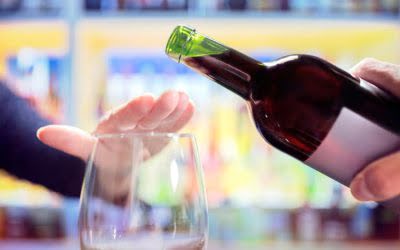To understand whether microbes were really to blame for fatty liver, the scientists fed the high-alcohol-producing K. Within one month, these mice developed measurable symptoms of fatty liver, which progressed to cirrhosis within two months. The bacteria-triggered liver disease followed the same timeline the researchers observed when they fed the mice pure alcohol. Symptoms of alcohol use disorder are based on the behaviors and physical outcomes that occur as a result of alcohol addiction. When healthcare providers screen for this condition, they look at drinking behavior patterns within the last year to determine a diagnosis.
Is alcohol use disorder treatment different for pregnant women and mothers of newborns?
People assumed that those with alcohol use disorders chose to keep drinking. No matter how hopeless alcohol use disorder may seem, treatment can help. If you think you might have a problem with alcohol, call SAMHSA or talk to your healthcare provider. They can help you cope, make a treatment plan, prescribe medications and refer you to support programs. Our study relied on a large-scale longitudinal database called the U.K. We assessed 1,869 white adults ranging in age from 40 to 79 years who reported demographic, alcohol, dietary and lifestyle factors via a touchscreen questionnaire.
Alcohol Use Disorder
Therapy teaches alcoholics to control emotions, cope with stress, make healthy decisions and avoid relapse. After months or years of abstinence, most people who have completed all the stages of recovery from alcoholism exhibit improved functioning and decision-making. The context of drinking plays an important role in the occurrence of alcohol-related harm, particularly as a result of alcohol intoxication. Alcohol consumption can have an impact not only on the incidence of diseases, injuries and other health conditions, but also on their outcomes and how these evolve over time. Severe alcohol use disorder (alcoholism) is an alcohol use disorder (AUD) characterized by an inability to control or stop drinking alcohol despite adverse effects on your personal or professional life, finances, and physical and mental health.
Lifestyle Changes
They use a set of 11 criteria established by the Diagnostic and Statistical Manual of Mental Disorders, Fifth Edition (DSM-5) to assess alcohol use severity. Healthcare providers define AUD as a brain disorder that affects your ability to regulate or stop drinking alcohol despite adverse impacts on your mental and physical health and professional or personal life. Medications can make detoxification safe while avoiding the worst symptoms of withdrawal. And medications and behavioral therapies can help people with AUD reduce alcohol intake or abstain from alcohol altogether. Alcoholism is a treatable disease, with many treatment programs and approaches available to support alcoholics who have decided to get help.
Managed drinking
- What starts out as a voluntary choice gets quickly encoded in the neural circuity and relegated to automatic processes that leave little room for conscious control.
- Therefore, we hoped to help untangle some of these factors through our research.
- Behavioral therapies can help people develop skills to avoid and overcome triggers, such as stress, that might lead to drinking.
- It disrupts a person’s ability to think critically, make rational decisions and function normally.
- While the exact causes of alcoholism are not known, a number of factors can play a role.
- Once you’re well enough to leave, you’ll need to continue to receive treatment on an outpatient basis.
The earliest damage occurs in the frontal lobe of the brain, which is responsible for memory, decision making, behavior and executive function. The terms chronic disease or chronic condition have multiple definitions. Major medical agencies and organizations disagree about which diseases are considered chronic, according to a 2016 article published in the journal Frontiers in Public Health. Pneumoniae converts sugar to alcohol, physicians may be able to diagnose this form of fatty liver with a simple blood test to measure blood alcohol levels in response to sugar. The researchers showed that mice harboring the alcohol-producing Klebsiella bacteria became inebriated and showed increased blood alcohol levels after consuming sugar. There are many biological and environmental factors that contribute to being overweight or obese.
Alcoholism is a complex, many-sided phenomenon, and its many formal definitions vary according to the point of view of the definer. A simplistic definition calls alcoholism a disease caused by chronic, compulsive drinking. A purely pharmacological-physiological definition of alcoholism classifies it as a drug addiction that requires imbibing increasing doses to produce desired effects and that causes a withdrawal syndrome when drinking is stopped.
People with severe AUD who have used alcohol long-term may experience severe withdrawal symptoms that require medical evaluation and treatment. A healthcare provider can evaluate the AUD severity and its health impacts, refer you to specialists, and determine the appropriate alcohol and insomnia treatment. In general, treatments for alcohol use disorder aim to alleviate withdrawal symptoms, stop or reduce alcohol use, and give patients behavioral skills and knowledge that can help them either stop drinking or maintain a healthy level of alcohol use.
Total alcohol per capita consumption in 2016 among male and female drinkers worldwide was on average 19.4 litres of pure alcohol for males and 7.0 litres for females. When healthcare providers screen for AUD, they look at drinking damage cocaine does to the nose behavior patterns within the last year to determine a diagnosis. They use 11 criteria established by the DSM-5 to assess alcohol use severity. Many people with AUD do recover, but setbacks are common among people in treatment.
It should be noted that this drunkenness at fiestas is a choice and does not produce regret. If the sociological model were entirely correct, alcoholism should often be expected to disappear with maturation as is the case with many other symptoms of social deviance. AUD is a brain disorder and disease that occurs when people cannot stop or control their drinking despite adverse effects on relationships, work or school, finances, and overall health. Healthcare providers use the umbrella term “alcohol use disorder” to classify a wide range of problematic alcohol use, such as alcohol abuse, dependence, addiction, and severe alcohol use disorder (alcoholism). Like many other substance use disorders, alcohol use disorder is a chronic and sometimes relapsing condition that reflects changes in the brain. This means that when people with the disorder are abstaining from alcohol, they are still at increased risk of resuming unhealthy alcohol consumption, even if years have passed since their last drink.
She stopped drinking for Dry January this year because she’d noticed alcohol was increasing her anxiety. She liked the results — better sleep, more energy — and has everything chip carter, son of jimmy and rosalynn, said during tribute service in atlanta stuck with it. The United Kingdom, France, Denmark, Holland and Australia recently reviewed new evidence and lowered their alcohol consumption recommendations.
Seeing addiction as a disease can make individuals feel hopeless about change and helpless, with no possibility of control over their own behavior. That doesn’t mean it is easy to gain control of the behaviors involved in addiction—but it is possible, and people do it every day. The disease model of addiction also suggests to people that they existing in a fragile state of recovery forever, always in danger of failing.
Finally, researchers treated the intestinal material harvested from MASLD mice with a virus that kills only Klebsiella. When intestinal material free of Klebsiella was transplanted into healthy mice, they didn’t develop any disease. We are all guilty of having a drink or two after a long day at work or for any fun occasion. Drinking has become a big part of the culture, but now we are starting to see the consequences of it. From Dry January to Sober October to bartenders getting creative with non-alcoholic cocktails, there’s a cultural vibe that supports cutting back.
Once seen as a moral failure, addiction has more recently been viewed strictly as a medical problem. The push to regard addiction as a disease is well-intentioned—driven by a desire to lessen stigma—but fails to account for the many facets and facts of the condition. Worse, it robs sufferers of the sense that they can overcome the problem with courage, creativity, and some hard work. Rather, there is significant evidence that addiction is a complex cultural, social, and psychological phenomenon, as much as it is a biological phenomenon.
One of the difficulties in recognizing alcoholism as a disease is it doesn’t quite seem like one. Your treatment setting will depend on your stage of recovery and the severity of your illness. You may need inpatient medical (hospital), residential rehabilitation (rehab), outpatient intensive therapy or outpatient maintenance. In the bigger picture, the study further illustrates the importance of the microbiome in regulating mood and behavior.









